NO MENTION OF TRUMP
Sheri Walsh
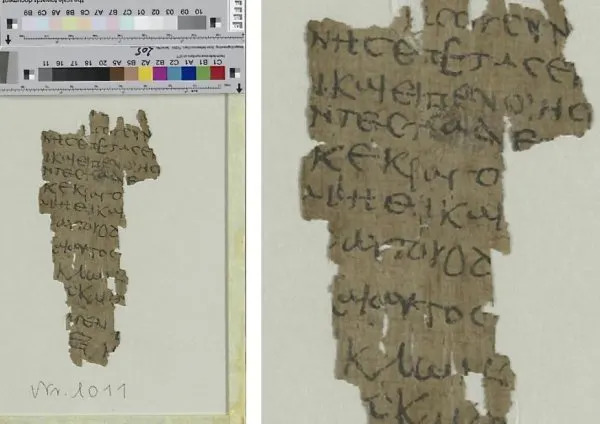
The researchers believe the copy of the Gospel was created as a writing exercise -- given the clumsy handwriting and irregular lines -- in a school or monastery, which would make it a much earlier surviving copy of the gospel than the 'Infancy Gospel of Thomas' manuscript from the 11th century.
"The fragment is of extraordinary interest for research," said Berkes. "On the one hand, because we were able to date it to the 4th to 5th century, making it the earliest known copy. On the other hand, because we were able to gain new insights into the transmission of the text."
While the words in the document are not from the Bible, they describe a "miracle," according to the Gospel of Thomas, that Jesus performed as a 5-year-old child as he moulded soft clay from a river into sparrows and then brought them to life.
Newly deciphered manuscript is oldest written record of Jesus’ childhood: ‘Extraordinary’
Andrew Court
That story, described as Jesus’ second miracle, is a well-known part of the Infancy Gospel of Thomas (IGT).
The IGT describes Christ’s childhood, and its stories were both popular and widespread in Antiquity and the Middle Ages.
However, the apocryphal text was not officially included in the Bible as some early Christian writers were doubtful of its accuracy.
The IGT is believed to have been first written down during the 2nd century; however, until now, a codex from the 11th century was the oldest known Greek version of the text.

Anders Hagstrom
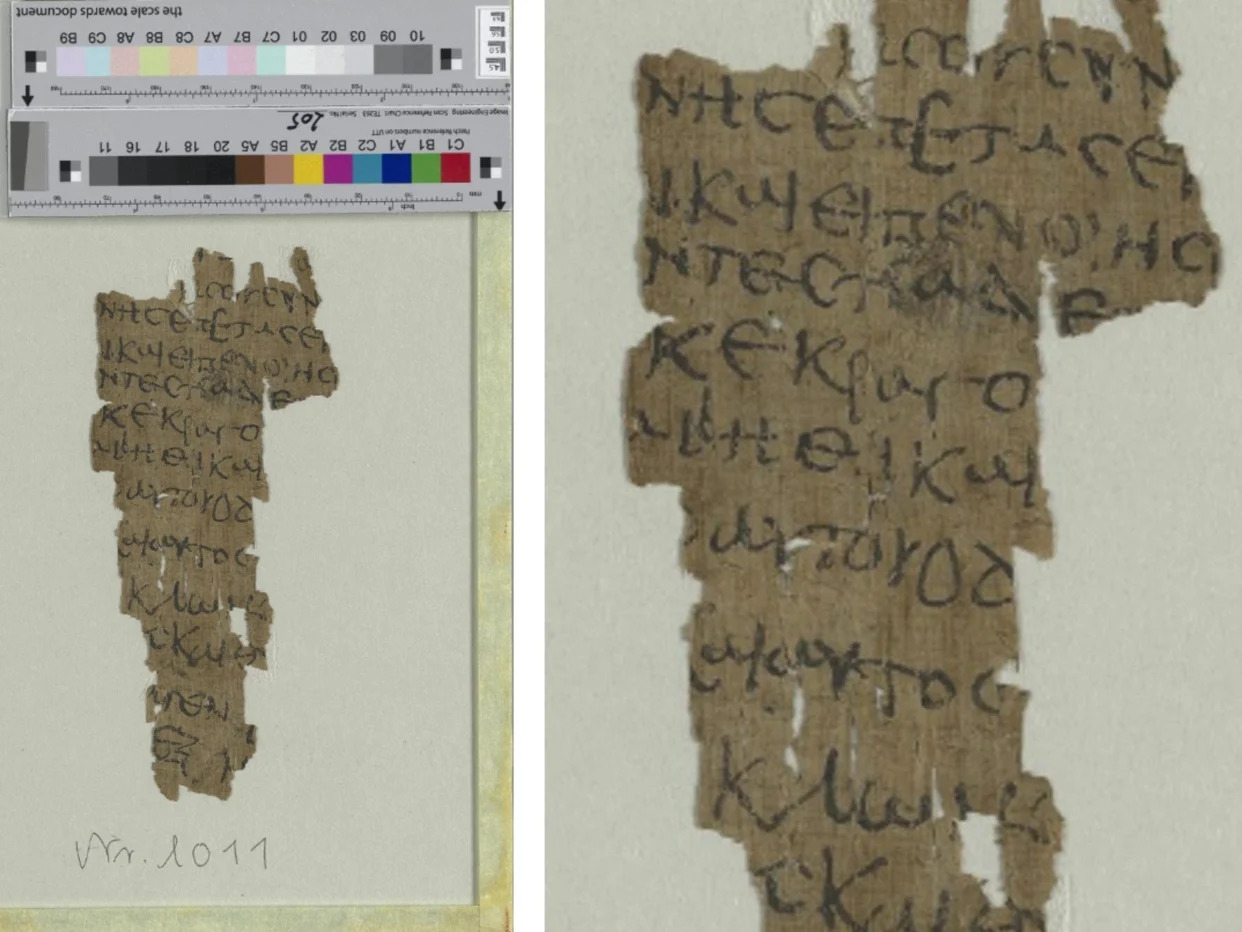
German researchers decode earliest known written record of Jesus' childhood
Researchers in Germany have decoded what they say is the oldest-ever manuscript detailing Jesus Christ's life as a child.
The papyrus manuscript dates back more than 1,600 years old to the 4th or 5th century. The document had been stored at a library in Hamburg, Germany, as no one believed the document was of any significance.
"The fragment is of extraordinary interest for research," Lajos Berkes, a professor and one of the researchers who decoded the document said in a press release. "On the one hand, because we were able to date it to the 4th to 5th century, making it the earliest known copy. On the other hand, because we were able to gain new insights into the transmission of the text."
"It was thought to be part of an everyday document, such as a private letter or a shopping list, because the handwriting seems so clumsy," he continued. "We first noticed the word Jesus in the text. Then, by comparing it with numerous other digitized papyri, we deciphered it letter by letter and quickly realized that it could not be an everyday document."

Researchers in Germany have decoded what they say is the oldest-ever manuscript detailing Jesus Christ's life as a child.
Berkes said the document is a fragment of the Gospel of Thomas, an apocryphal book that was not included in the Bible. The gospel offers details about Jesus' life as a child before his ministry.
The poor handwriting in the document led Berkes to believe the manuscript was made as part of a writing exercise in a monastery or a school.
While there are only a handful of words in the manuscript, the researchers were able to determine that it is retelling the apocryphal story of the "vivication of the sparrows."
"Jesus plays at the ford of a rushing stream and molds twelve sparrows from the soft clay he finds in the mud. When his father Joseph rebukes him and asks why he is doing such things on the holy Sabbath, the five-year-old Jesus claps his hands and brings the clay figures to life," the press release stated.
While there are only a handful of words in the manuscript, the researchers were able to determine that it is retelling the apocryphal story of the "vivication of the sparrows."
Original article source: German researchers decode earliest known written record of Jesus' childhood
SEE
Sheri Walsh
UPI
Wed, June 12, 2024
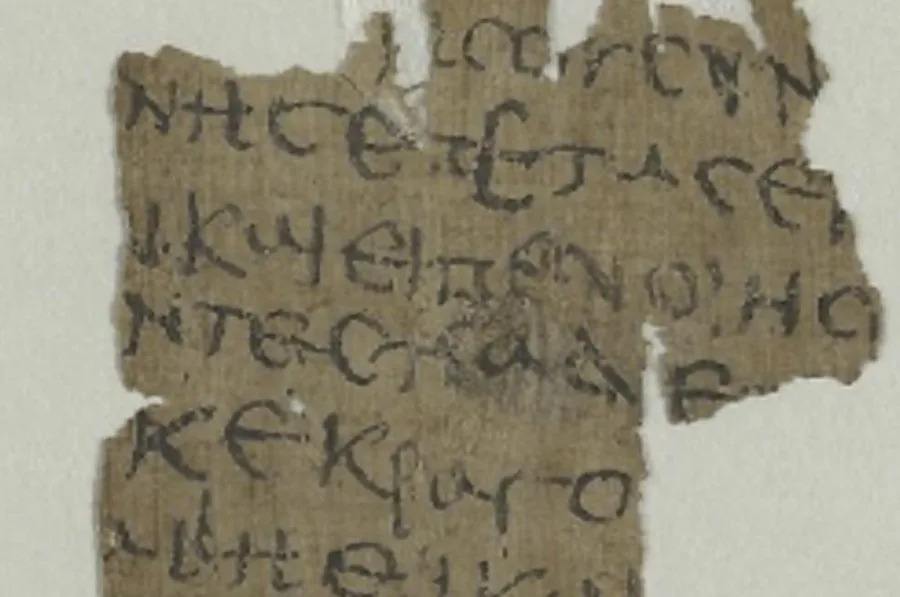
A papyrus fragment, dating from the 4th to 5th century, was recently deciphered after being stored for decades in a university library in Hamburg, Germany. It has been identified by researchers as the earliest surviving writings about Jesus Christ's childhood. Photo courtesy of Staats- und Universitätsbibliothek Hamburg/Public Domain Mark 1.0
June 12 (UPI) -- A recently deciphered manuscript, dating back to the 4th or 5th century and stored in a university library in Hamburg, Germany, has been identified by researchers as the earliest surviving account of Jesus Christ's childhood.
"Our findings on this late antique Greek copy of the work confirm the current assessment that the 'Infancy Gospel of Thomas' was originally written in Greek," said papyrologist Gabriel Nocchi Macedo from the University of Liège in Belgium.
The papyrus fragment, dating back more than 1,600 years, had gone unnoticed for decades at the Hamburg Carl von Ossietzky State and University Library, until Macedo and Dr. Lajos Berkes from the Institute for Christianity and Antiquity at Humboldt-Universität zu Berlin identified its true origin.
The small fragment, which measures just over 4 inches by 2 inches, contains thirteen lines of Greek letters from late antique Egypt. The content was originally thought to be part of "an everyday document, such as a private letter or a shopping list, because the handwriting is so clumsy," said Berkes. "Then, by comparing it with numerous other digitized papyri, we deciphered it letter by letter and quickly realized it could not be an everyday document."
Wed, June 12, 2024

A papyrus fragment, dating from the 4th to 5th century, was recently deciphered after being stored for decades in a university library in Hamburg, Germany. It has been identified by researchers as the earliest surviving writings about Jesus Christ's childhood. Photo courtesy of Staats- und Universitätsbibliothek Hamburg/Public Domain Mark 1.0
June 12 (UPI) -- A recently deciphered manuscript, dating back to the 4th or 5th century and stored in a university library in Hamburg, Germany, has been identified by researchers as the earliest surviving account of Jesus Christ's childhood.
"Our findings on this late antique Greek copy of the work confirm the current assessment that the 'Infancy Gospel of Thomas' was originally written in Greek," said papyrologist Gabriel Nocchi Macedo from the University of Liège in Belgium.
The papyrus fragment, dating back more than 1,600 years, had gone unnoticed for decades at the Hamburg Carl von Ossietzky State and University Library, until Macedo and Dr. Lajos Berkes from the Institute for Christianity and Antiquity at Humboldt-Universität zu Berlin identified its true origin.
The small fragment, which measures just over 4 inches by 2 inches, contains thirteen lines of Greek letters from late antique Egypt. The content was originally thought to be part of "an everyday document, such as a private letter or a shopping list, because the handwriting is so clumsy," said Berkes. "Then, by comparing it with numerous other digitized papyri, we deciphered it letter by letter and quickly realized it could not be an everyday document."

The researchers believe the copy of the Gospel was created as a writing exercise -- given the clumsy handwriting and irregular lines -- in a school or monastery, which would make it a much earlier surviving copy of the gospel than the 'Infancy Gospel of Thomas' manuscript from the 11th century.
"The fragment is of extraordinary interest for research," said Berkes. "On the one hand, because we were able to date it to the 4th to 5th century, making it the earliest known copy. On the other hand, because we were able to gain new insights into the transmission of the text."
While the words in the document are not from the Bible, they describe a "miracle," according to the Gospel of Thomas, that Jesus performed as a 5-year-old child as he moulded soft clay from a river into sparrows and then brought them to life.
Newly deciphered manuscript is oldest written record of Jesus’ childhood: ‘Extraordinary’
Andrew Court
NY POST
Tue, June 11, 2024
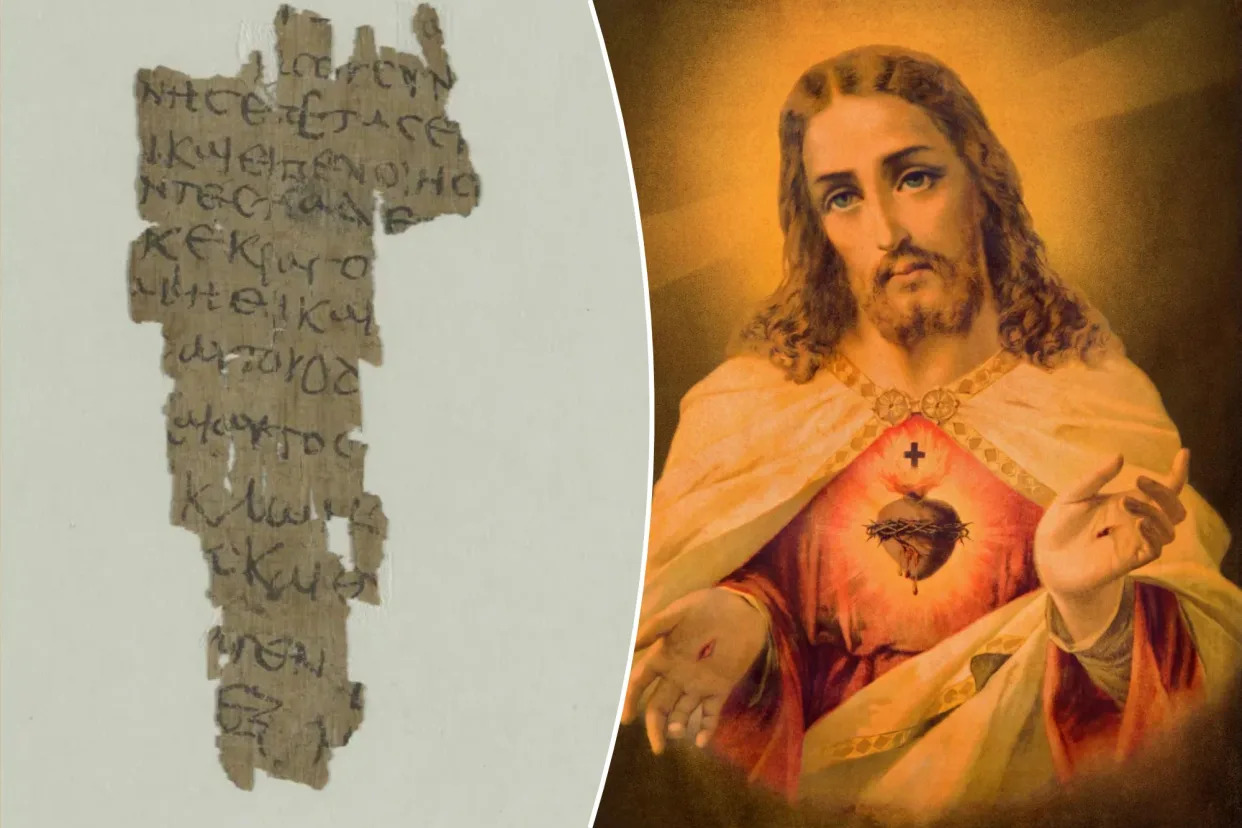
A newly deciphered manuscript dating back more than 1,600 years has been identified as the earliest known account of Jesus Christ’s childhood.
The manuscript, written on papyrus in either the 4th or 5th century, had been stored at a library in Hamburg, Germany, for decades and was long believed to be an insignificant document.
However, two experts have now decoded the text and say it is the earliest surviving copy of the Infancy Gospel of Thomas.
“The papyrus fragment is of extraordinary interest for research,” Lajos Berkes, a theology lecturer and one of the two men who deciphered the document, declared in a press release.
“It was thought to be part of an everyday document, such as a private letter or a shopping list, because the handwriting seems so clumsy,” the expert explained. “We first noticed the word Jesus in the text. Then, by comparing it with numerous other digitized papyri, we deciphered it letter by letter and quickly realized that it could not be an everyday document.”
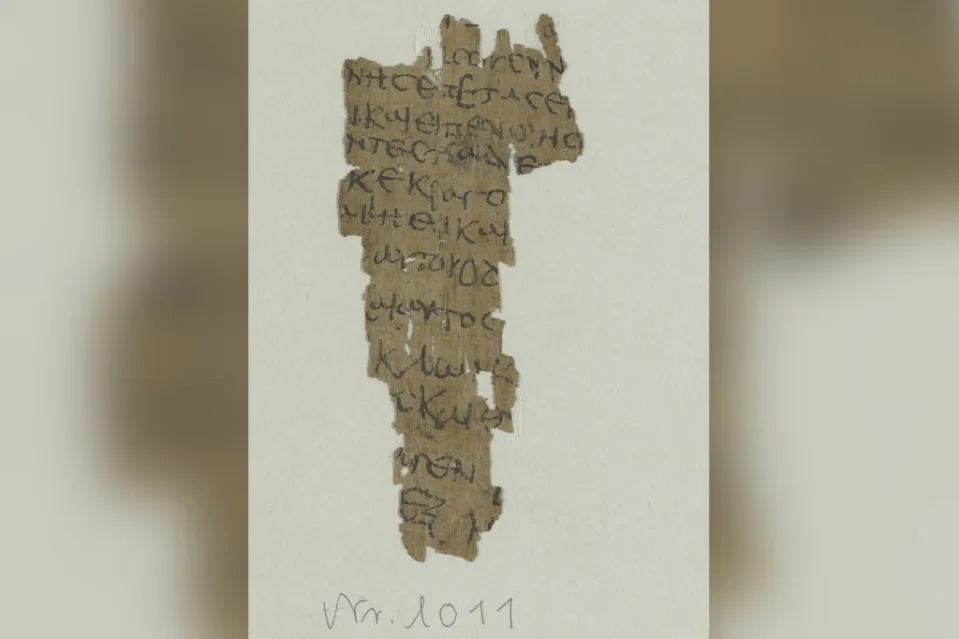
The papyrus manuscript had been stored at a library in Hamburg, Germany. Staats- und Universitätsbibliothek Hamburg / PD
The piece of papyrus contains a total of 13 lines in Greek letters and originates from late antique Egypt, which was a Christian society at that time.
The manuscript describes the beginning of the “vivification of the sparrows” — a story from Jesus’ childhood in which he turns 12 clay sparrows into live birds.
According to the text, Jesus was playing beside a rushing stream where he molded the sparrows from soft clay. When rebuked by his father, Joseph, the 5-year-old Jesus clapped his hands and brought the clay figures to life.
The Infancy Gospel of Thomas describes Jesus’ childhood, but it is not included in the Bible.
Tue, June 11, 2024

A newly deciphered manuscript dating back more than 1,600 years has been identified as the earliest known account of Jesus Christ’s childhood.
The manuscript, written on papyrus in either the 4th or 5th century, had been stored at a library in Hamburg, Germany, for decades and was long believed to be an insignificant document.
However, two experts have now decoded the text and say it is the earliest surviving copy of the Infancy Gospel of Thomas.
“The papyrus fragment is of extraordinary interest for research,” Lajos Berkes, a theology lecturer and one of the two men who deciphered the document, declared in a press release.
“It was thought to be part of an everyday document, such as a private letter or a shopping list, because the handwriting seems so clumsy,” the expert explained. “We first noticed the word Jesus in the text. Then, by comparing it with numerous other digitized papyri, we deciphered it letter by letter and quickly realized that it could not be an everyday document.”

The papyrus manuscript had been stored at a library in Hamburg, Germany. Staats- und Universitätsbibliothek Hamburg / PD
The piece of papyrus contains a total of 13 lines in Greek letters and originates from late antique Egypt, which was a Christian society at that time.
The manuscript describes the beginning of the “vivification of the sparrows” — a story from Jesus’ childhood in which he turns 12 clay sparrows into live birds.
According to the text, Jesus was playing beside a rushing stream where he molded the sparrows from soft clay. When rebuked by his father, Joseph, the 5-year-old Jesus clapped his hands and brought the clay figures to life.
The Infancy Gospel of Thomas describes Jesus’ childhood, but it is not included in the Bible.
That story, described as Jesus’ second miracle, is a well-known part of the Infancy Gospel of Thomas (IGT).
The IGT describes Christ’s childhood, and its stories were both popular and widespread in Antiquity and the Middle Ages.
However, the apocryphal text was not officially included in the Bible as some early Christian writers were doubtful of its accuracy.
The IGT is believed to have been first written down during the 2nd century; however, until now, a codex from the 11th century was the oldest known Greek version of the text.

“Our findings on this late antique Greek copy of the work confirm the current assessment that the Infancy Gospel according to Thomas was originally written in Greek,” Gabriel Nocchi Macedo, the other expert who helped decode the papyrus fragment, said. Staats- und Universitätsbibliothek Hamburg / PD
The newly deciphered papyrus fragment predates that document by an astonishing 600 years.
“Our findings on this late antique Greek copy of the work confirm the current assessment that the Infancy Gospel according to Thomas was originally written in Greek,” Gabriel Nocchi Macedo, the other expert who helped decode the papyrus fragment, declared.
Both Macedo and Berkes believe the manuscript was written onto the papyrus fragment as a writing exercise at either a school or a monastery.
“From the comparison with already known manuscripts of this Gospel, we know that our text is the earliest,” Berkes stated.
German researchers decode earliest known written record of Jesus' childhood
The newly deciphered papyrus fragment predates that document by an astonishing 600 years.
“Our findings on this late antique Greek copy of the work confirm the current assessment that the Infancy Gospel according to Thomas was originally written in Greek,” Gabriel Nocchi Macedo, the other expert who helped decode the papyrus fragment, declared.
Both Macedo and Berkes believe the manuscript was written onto the papyrus fragment as a writing exercise at either a school or a monastery.
“From the comparison with already known manuscripts of this Gospel, we know that our text is the earliest,” Berkes stated.
German researchers decode earliest known written record of Jesus' childhood
Anders Hagstrom
FOX NEWS
Wed, June 12, 2024

German researchers decode earliest known written record of Jesus' childhood
Researchers in Germany have decoded what they say is the oldest-ever manuscript detailing Jesus Christ's life as a child.
The papyrus manuscript dates back more than 1,600 years old to the 4th or 5th century. The document had been stored at a library in Hamburg, Germany, as no one believed the document was of any significance.
"The fragment is of extraordinary interest for research," Lajos Berkes, a professor and one of the researchers who decoded the document said in a press release. "On the one hand, because we were able to date it to the 4th to 5th century, making it the earliest known copy. On the other hand, because we were able to gain new insights into the transmission of the text."
"It was thought to be part of an everyday document, such as a private letter or a shopping list, because the handwriting seems so clumsy," he continued. "We first noticed the word Jesus in the text. Then, by comparing it with numerous other digitized papyri, we deciphered it letter by letter and quickly realized that it could not be an everyday document."

Researchers in Germany have decoded what they say is the oldest-ever manuscript detailing Jesus Christ's life as a child.
Berkes said the document is a fragment of the Gospel of Thomas, an apocryphal book that was not included in the Bible. The gospel offers details about Jesus' life as a child before his ministry.
The poor handwriting in the document led Berkes to believe the manuscript was made as part of a writing exercise in a monastery or a school.
While there are only a handful of words in the manuscript, the researchers were able to determine that it is retelling the apocryphal story of the "vivication of the sparrows."
"Jesus plays at the ford of a rushing stream and molds twelve sparrows from the soft clay he finds in the mud. When his father Joseph rebukes him and asks why he is doing such things on the holy Sabbath, the five-year-old Jesus claps his hands and brings the clay figures to life," the press release stated.
While there are only a handful of words in the manuscript, the researchers were able to determine that it is retelling the apocryphal story of the "vivication of the sparrows."
Original article source: German researchers decode earliest known written record of Jesus' childhood
SEE
No comments:
Post a Comment